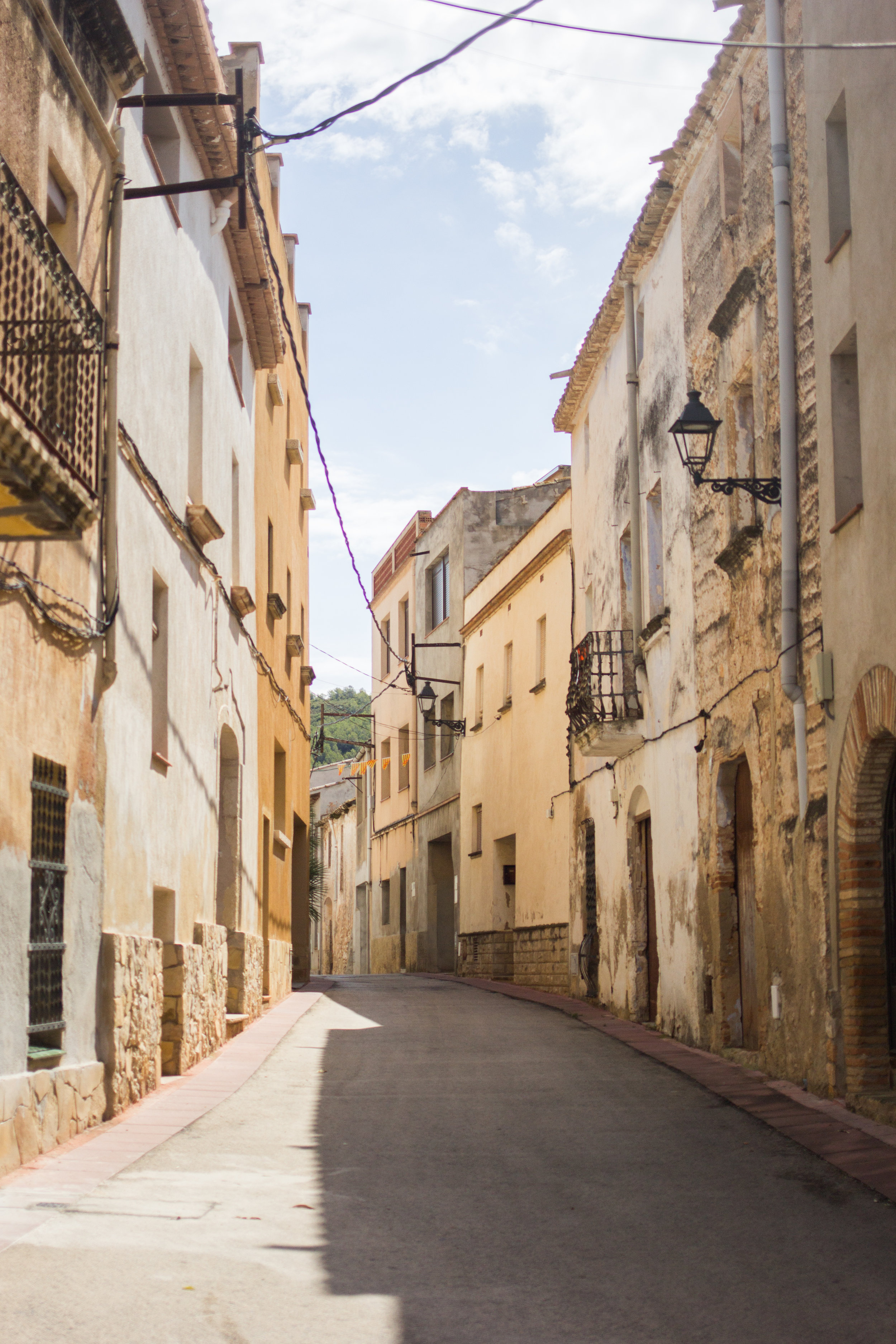The Penedès Region
Explore one of Spain's oldest and most beautiful wine regions during your stay at Mas Palou. Known for its wine, incredible fresh food, and stunning mountain and vineyard vistas, the Penedès region is a hidden gem to be explored.
Once you make a reservation with us you will receive a guide that we carefully made with our favorite spots.
EXpLORING PENEDès
By Mika Lanir.
Mas Palou is only a short drive away from Barcelona, but the surrounding Penedès county also contains some incredible little towns, amazing landscapes, and unique celebrations of Catalan culture, gems waiting to be discovered. Each of these places is a great destination for a visit, and even planning in advance in order to catch the culture festivals.
Vilafranca
We went out to Vilafranca in the afternoon, hoping to catch a rehearsal of the Castellers Vilafranca Human towers team. We had some time to spare before it started, so we sat at L'Àngelus: a wine bar in the shadow of the Basílica de Santa Maria. The owner, a kind and incredibly knowledgeable sommelier, served us a selection of local wines and some pecorino cheese as we talked and watched the people come and go.
Human towers is a uniquely Catalan sport, where participants stand on each other’s shoulders in structures up to ten people high: it’s been called a Masterpiece of Human Intangible Tradition by UNESCO. They organize by weight, from burly men at the bottom to small, helmet-wearing girls at the top. Everyone wears the same outfit: a waist cloth with two bandanas tied around it, to provide footing for the people climbing over them. They practice several times a week in a wide and well-equipped gym—the Vilafranca team is by far the best in the region, and they are rich in sponsors. They all work together, with no separation of genders, all embracing each other to reach the ceiling, and then climb down safely. It feels quite inspiring—all work together to get as high as possible, no one loses. “Except for the other towns,” Maria interjects.
Vilafranca also wins in having the largest and most complicated town parade: its Festa Major at the end of August lasts three days and contains a record number of Catalan traditions, such as groups of dancers doing the Sardana, Gegants, or giant sculptures of renaissance figures are parading around, and Dancers dressed as devils waving firecrackers. “Every single person in town gets involved in something,” says Maria, “It’s a huge part of life in this town.”
Vilanova i la Geltru
Another town worthy of a daytrip is Vilanova i la Geltru: it has a fantastic, white-sand, blue-water, sunny, perfect beach, where we lazed the afternoon away, rotating between dips in the clear blue water and reading a book on a beach chair. We met up with two of Maria’s friends from Sitges, and had cold glasses of beer and anchovy-filled olives (admittedly not my favorite) in one of the many open air beach-facing bars.
Wine tasting
There are some-200 winemakers in Penedès county, providing a plethora of Wine tasting options. We went to a small one called Esteve i Gibert, which produces small batches of wine from local varieties in natural methods. We walked around the vineyards and saw the steel tanks and chestnut barrels which held 2,000 litres of wine each, and then sampled their whole line, ending the tour pleasantly lightheaded.
Sitges
Finally, Sitges is probably my favorite locale on this list. It is a sunny, leisurely little town with countless stores, bakeries and bars, with a reputation of welcoming the LGBT+ community and hosting a famous horror film festival—a town of many faces. We strolled through the narrow streets, and had amazing custard croissants at Forn 9, went to Sant Bartolomeu chapel overlooking the sea, and then sat in a small bar, enjoying a beer and a bikini—a deep-fried ham, cheese and anchovy sandwich—and looked at the people going by.
Wines
The area has long been considered one of Spain's best wine-producing regions, and is one of the most ancient viticultural areas in Europe. The Mediterranean climate and varied landscape enable the production of a diversity of wines: but Cava, sparkling wine, stands out as a distinctly Catalan drink of choice. Though Cava is made using a similar process to the French Champagne, it requires local Spanish varietals such as Xarel.lo, Macabeu and Parellada – the trio of Cava. Cava varies from very dry to sweet, providing wine for every taste. Do taste the Penedes white and red whites, though, and you will be impressed. Are you interested in natural wines? We are making those, too.
V A R I E T I E S
Grapes grown in the Penedès are mostly of the white variety, with 4/5ths of wine from this region being white. Some local white varieties include:
Xarel.lo
Macabeu
Parellada
Malvasía de Sitges
International varieties are also grown here, such as:
Chardonnay
Riesling
Sauvignon Blanc
Muscat Blanc
If you prefer red wines, never fear – there are several red varieties local to the Penedès region:
Red Garnacha (typically used in the production of the region's rosé)
Monastrell
Samsó
Ull de Llebre
Sumoll
These grapes grow right alongside international varieties like:
Cabernet Sauvignon
Cabernet Franc
Syrah
Merlot
Pinot Noir
There is an abundance of wineries in the area – some of which we sell our grapes to. We know that guests look for different things when visiting a winery, so we are happy to recommend places and book tours based on your preferences.
To read more on tastings and recommended wineries, check out our Instagram.









